Editorial Board profiles
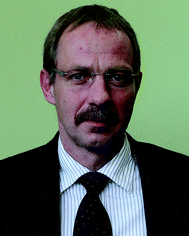 |
| | Plate1 Detlef Günther | |
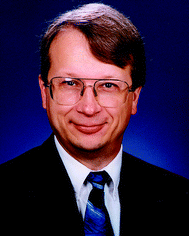 |
| | Plate2 John Olesik | |
John Olesik was born in the United States, in 1955. He received his PhD in Analytical Chemistry from the University of Wisconsin-Madison, USA, in 1982, and was a postdoctoral research associate in Analytical Chemistry at Indiana University from 1982 to 1984. He was an Assistant Professor in the Department of Chemistry at the University of North Carolina-Chapel Hill from 1984 until 1991. He has been a Research Scientist and Adjunct Associate Professor in the School of Earth Sciences at The Ohio State University since 1991, where he is also currently Director of the Trace Element Research Laboratory. His current research interests are: fundamental processes in plasma optical emission and mass spectrometry, electrospray mass spectrometry, ion-molecule reactions to overcome spectral overlaps in plasma mass spectrometry, aerosol generation and transport, laser ablation sampling, elemental speciation, and applications of optical and mass spectrometry in a variety of areas including materials, biological, biomedical and earth sciences.
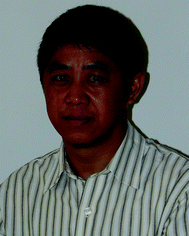 |
| | Plate3 Shan Gao | |
Shan Gao is a Full Professor for Geochemistry at China University of Geosciences (Wuhan) and Adjunct Professor for Geochemistry at Northwest University (Xi'an). He received his PhD from China University of Geosciences (Wuhan) in 1989. His current interests are: laser ablation ICP-MS and its applications to in situ elemental and isotopic analysis of minerals, chemical composition of the continental crust, and chemical exchange between the crust and the mantle. He is author and co-author of approximately 90 original papers in international journals. Recent JAAS publication: DOI: 10.1039/B921006G.
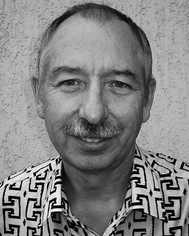 |
| | Plate4 Norbert Jakubowski | |
Norbert Jakubowski has been Reviews Editor of JAAS since 2006. He studied physics at the University of Duisburg/Essen and completed his PhD in physics at the University of Hohenheim. He was a senior scientist at the Institute for Analytical Sciences, Dortmund and Berlin (from 1983 to 2009) and is now Head of BAM's Division I.1 Inorganic Chemical Analysis and Reference Materials (since July 2009). His research interests include inorganic trace and ultra trace analysis of liquids and solids by use of ICP-MS and GD-MS, elemental speciation analysis and development of elemental tags for quantitative detection of biomolecules. He has received awards including the Alan Date Memorial Award from VG Elemental, Surrey, GB (1990), Zimmer International Scholar from the University of Cincinnati, USA (2005) and a Waters Symposium Award for Pioneers in ICP-MS (2006). Recent JAAS publication: DOI: 10.1039/C0JA00009D.
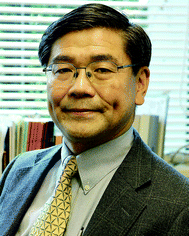 |
| | Plate5 Naoki Furuta | |
Naoki Furuta received a Bachelor of Science degree from Tokyo Metropolitan University in 1973, and a Masters of Science from the University of Tokyo in 1975. After working at the National Institute for Environmental Studies (NIES) for 19 years (1975–1994), he moved to Chuo University where he became a professor at the Department of Applied Chemistry. While working, he earned a Doctor of Science degree from the University of Tokyo in 1979. From 1979 to 1981 he was a postdoctoral fellow at the University of Alberta under the direction of Professor Gary Horlick. His current research interests include the determination of total concentration of trace elements and their chemical species, the identification of sources of toxic elements in environmental samples, elucidation of the role of trace elements in biological samples, the development of analytical methods such as nano HPLC-ICP-MS, a laser ablation and on-line column pre-concentration, and the evaluation of new instruments such as ICP-MS using an ion trap mass spectrometer and ICP-OES using CCD as a detector. Recent JAAS publication: 10.1039/C004790B.
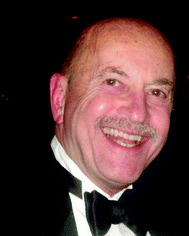 |
| | Plate6 Gary Hieftje | |
Gary M. Hieftje is Distinguished Professor and Mann Chair of Chemistry at Indiana University in Bloomington, Indiana. His research interests include the investigation of basic mechanisms in atomic emission, absorption, fluorescence and mass spectrometric analysis, and the development of instrumentation and techniques for atomic methods of analysis. He is interested also in the on-line computer control of chemical instrumentation and experiments, the use of time-resolved luminescence processes for analysis, the application of information theory to analytical chemistry, analytical mass spectrometry, near-infrared reflectance analysis, metallomics, and the use of stochastic processes to extract basic and kinetic chemical information. He has won numerous awards in the fields of analytical chemistry and spectroscopy, has held major offices in several scientific societies, and has served on the editorial boards of many major journals. He is the author of over 550 publications, 10 books, and 15 patents. More than 65 students have received doctorates under his direction. Recent JAAS publication: DOI: 10.1039/B913118C.
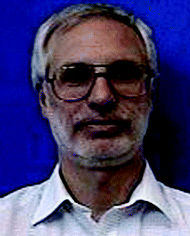 |
| | Plate7 Steve Hill | |
Steve Hill is Professor of Analytical Chemistry in the School of Geography, Earth and Environmental Science at the University of Plymouth. His work in the field of analytical and environmental chemistry involves atomic spectroscopy, coupled techniques (especially HPLC-ICP-MS), trace metal speciation, instrumental method development, vapour generation techniques, novel approaches to sample preparation, chemometrics, and the application of these to real-life problems. His current focus involves the study of terrestrial systems, in particular contaminated and ex mining land. Prof. Hill sits on the Executive Committee of the Environment, Sustainability and Energy Forum, is a Peer Review College member of both NERC and the EPSRC, and is a Council member of the RSC’s Analytical Division.
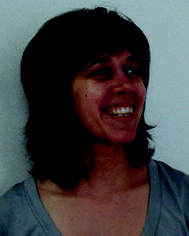 |
| | Plate8 Gunda Köllensperger | |
Gunda Köllensperger is currently Associate Professor at the Division of Analytical Chemistry, University of Natural Resources and Applied Life Sciences, Vienna. She graduated in 1995 from the Vienna-University of Technology after a one year research stay at the Institute for Micro- and Trace Analysis, University of Antwerp, Belgium (master thesis). She received her PhD degree from the former University in 1998. Then she moved to the University of Natural Resources and Applied Life Sciences, Vienna where she obtained her habilitation degree (venia docendi) for analytical chemistry in 2003. Her current research interests focus on elemental speciation analysis and the combined use of elemental and molecular mass spectrometry in biology and biomedicine. She is particularly involved in the development of elemental proteomic work flows and their integration in preclinical studies of experimental drugs, strategies for in vivo quantification of biomolecules and the application of ICP-MS approaches in the biotechnological production of metalloproteins/proteins. Recent JAAS publication: DOI: 10.1039/C000427H.
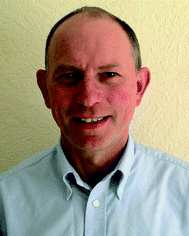 |
| | Plate9 Barry Sharp | |
Barry Sharp studied chemistry and physics as an undergraduate which was followed by a PhD at Imperial College. After graduating, he joined the staff as a Lecturer in Analytical Chemistry and after 3 years moved to the Macaulay Institute in Aberdeen, eventually becoming head of its Analytical Division. He joined the Chemistry Department at Loughborough University in 1990. His research is focused on the development of elemental mass spectrometry using inductively coupled plasma source and laser sampling methods for mass spectrometry. His work covers a range of topics from fundamental studies on mass spectrometry to the development of specific applications, mostly in the bio-medical and nuclear sciences. He has published over 100 papers and was a founder member of the JAAS Editorial Board, with the late John Ottaway, and a former Editorial Board Chair in which capacity he served for 8 years.
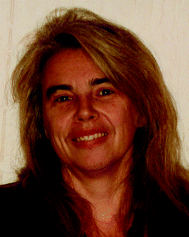 |
| | Plate10 Joanna Szpunar | |
Joanna Szpunar graduated from the Warsaw University of Technology in 1986. She was a research fellow at the Polish Academy of Sciences (1987–1988), and then she moved (1989–1992) to the University of Warsaw from which she obtained her Ph.D (1992) and D.Sc. (habilitation) (2000) degrees. In 1993–1994, she was a research fellow at the University of Antwerp (U.I.A), and then a fellow of the European Environmental Research Organization at the University of Bordeaux (France). In 1997 she joined the French National Research Council (CNRS) as research engineer and has been working in the Group of Bio-inorganic Analytical Chemistry at the UMR 5034 in Pau ever since. Her research interests concern HPLC, CZE and hyphenated techniques applied to speciation and fractionation of trace metals and metalloids in biological systems. Recent JAAS publication: DOI: 10.1039/C000686F.
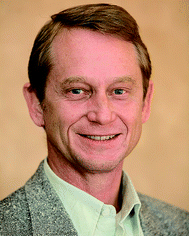 |
| | Plate11 Scott Tanner | |
Scott Tanner is an Associate Professor in the Department of Chemistry at the University of Toronto, Canada. He is coordinating a multidisciplinary, multi-institute and multi-national project to develop instrumentation, reagents and methods for the multi-parametric determination of biomarkers in individual cells and particles. Following receipt of a PhD in physical chemistry from York University (Toronto) in 1980, he joined Sciex Inc. and stayed for 25 years. By the mid-1980's he was developing ion optics for, and querying the fundamentals of, ICP-MS. At the end of the millennium, Scott and his team began looking at applying the multiplex capability of ICP-MS to bioassays through element-tagging of antibodies. The team left Sciex in 2005 for the University of Toronto to develop the tools and reagents of mass cytometry, and formed DVS Sciences Inc. to bring these products to the market. Scott received the 2001 Manning Innovation Foundation Award of Distinction and the 2003 W.A.E. McBryde Medal from the Canadian Society for Chemistry, and is proud to have recently been accepted as a Fellow of the Royal Society of Chemistry. Recent JAAS publication: DOI: 10.1039/B921770C.
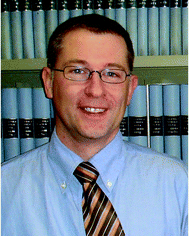 |
| | Plate12 Frank Vanhaecke | |
Frank Vanhaecke obtained his PhD degree in 1992 from Ghent University (Belgium). He continued carrying out scientific research as a post-doctoral fellow at the same university and also enjoyed a post-doctoral stay at the Johannes Gutenberg University of Mainz (Germany). Since 1998, Frank has been Professor in Analytical Chemistry at Ghent University. His research interest is the determination, speciation and isotopic analysis of trace elements using ICP-mass spectrometry. Special attention is devoted to the direct analysis of solid materials using both ETV-ICP-MS and LA-ICP-MS, the development of methods relying on the use of ICP-MS for ADME studies in the pharmaceutical industry and isotope ratio determination using single- and multi-collector ICPMS in the context of elemental assay via isotope dilution, tracer experiments with stable isotopes and the use of small natural variations in the isotopic composition of metals and metalloids for unravelling geological and biological processes. He is (co-)author of some 160 journal papers and more than 300 conference presentations. Frank is a Fellow of the RSC. Recent JAAS publication: DOI: 10.1039/C002746D.
|
| This journal is © The Royal Society of Chemistry 2011 |
Click here to see how this site uses Cookies. View our privacy policy here. 











